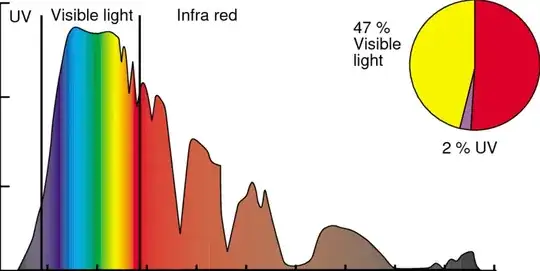I am making a space sci-fi film. And the planet that it takes place on the sky is green (like how ours is blue). The air can be toxic but it need to be able to explode if oxygen is introduced in to it. And temperatures of the planet is hot(about 1000F-1500F 540C-815C) and pressure is 100 bars. The planet also has no living life (at least when the story takes place) Star can be whatever and it doesn’t have to be exactly green.
-
1Just how distinctly green must it be? If a greenish tinged blue is OK, methane would do the trick. – Logan R. Kearsley Aug 25 '22 at 01:59
-
Yeah whatever takes it the closest – Thomas Johnson Aug 25 '22 at 02:18
-
What temperature range are you treating as "extra hot"? If you want a hard science answer then that's the kind of variable that needs to be defined. – KerrAvon2055 Aug 25 '22 at 02:47
-
2I think you should better define what you mean with green. For a Japanese or a European, for example, it could mean different things. – L.Dutch Aug 25 '22 at 04:59
-
Could you give atmospheric temperature (range) and pressure? I think it would be helpful to you to take our [tour] and read the [help], particularly the [ask] section. – Escaped dental patient. Aug 25 '22 at 05:27
-
1Chlorine is green. It won't explode due to oxygen but will with hydrogen. Failing that, I guess a yellow gas in an otherwise blue sky might do it. Fluorine?? – Aug 25 '22 at 10:17
-
Maybe even a very fine yellow dust might do it? – Aug 25 '22 at 10:18
-
@kerrAvon2055 I add a temperature. And I meant science-based not hard-science – Thomas Johnson Aug 25 '22 at 17:54
-
Some help: (a) Check out this chart about star colors and atmospheric color. (b) All gasses that can be gasses on human-habitable worlds scatter blue. Cool that you're not focusing on a habitable world. Also, if you read the roll-overs for [tag:hard-science], [tag:science-based], and [tag:science-fiction], you'll discover they're all mutually exclusive. Please pick just one of those tags. – JBH Aug 26 '22 at 02:50
2 Answers
The reason our sky is blue is a mixture of 2 phenomenan called Rayleigh scattering and blackbody radiation.
Rayleigh scattering says that shorter wavelengths of light (blues and purples) are more likely to bounce of the air molecules compared to longer wavelengths of light (reds and yellows).
Blackbody radiation is the relation between the temperature of an object and the colours it gives of ("red hot" ,"white hot"...) this is the image shows the colours that make up sun light
Now if you have a slightly colder star a red or orange star (compared to our white star) then it would emit less blue/purple light, so the only light left to be bounced by Rayleigh scattering is green light.
So a planet with a thick (earth like) atmosphere, orbiting close to a red or orange star would have a green sky.
If you need the air to explode with the addition of oxygen then the atmosphere could consist of hydrocarbons (methane, ethane..), as such gasses would burn/explode when mixed with oxygen.
hopefully that helps
- 1,993
- 5
- 20
-
2I am not sure this is right. At sunset when the sunlight crosses a thicker atmospheric layer our star turns to red. A colder star would be already more reddish (our Sun is peaked at yellow, not white. White is not a wavelength), so it won't turn to green in any way. – L.Dutch Aug 25 '22 at 05:15
-
Atmosphere makes sun yellow/red because it scatters all the blue rays to the other portions of sky whereas letting red rays go unimpeded. – alamar Aug 25 '22 at 08:54
-
@L.Dutch our sun is a white star because, while it peaks at yellow, it has significant (and approximately even) components across the visible spectrum so our eyes perceive it as white (have just fount that it is still called yellow star, editing to suit). Where as a colder star has less blue/purple light in its spectra so our eyes perceive it as orange or red. Also at sunset the sun is red because Rayleigh scattering has scattered both the blue/purple light and the green/yellow light, because as you say it has passed through a thicker slice of the atmosphere – Nyra Aug 25 '22 at 09:32
-
There are no truly green stars but some stars produce more green light than others. Take a yellow star with a temperature of just over 5000 degrees C and there will be a lot of green light, although it will be masked by the mixture of other colours.
So add a lot different gases to the atmosphere that will absorb the blue and red ends of the spectrum. UV and blue light could be removed by high concentrations of Ozone and other gases high up in the atmosphere and then add a range of other gases in the lower atmosphere that absorb red light.
- 37,270
- 6
- 55
- 146